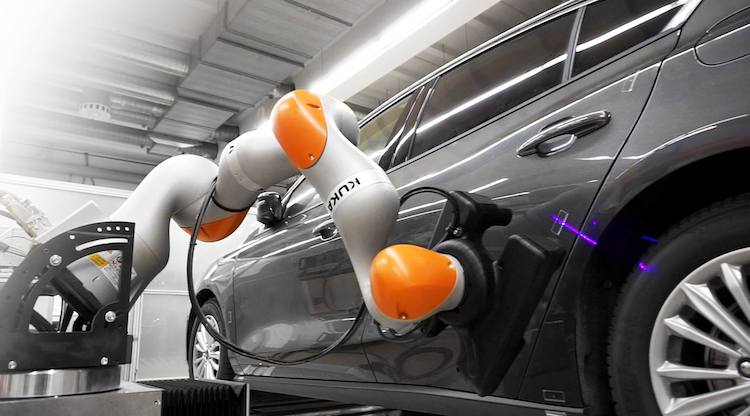
How Are Robots Used in Car Manufacturing?
Have you ever been at an auto show or a vehicle auction and seen amazing cars that left you wondering how they created such intricate shapes and precise details on that many cars?
The answer is quite simple: they use robots. Robots were introduced in the automotive industry in the sixties by General Motors.
Since then, car manufacturers have used them to keep up with the increased car demand. This has made it easier to make more cars and at a cheaper cost.
But there’s more to what industrial robots do than make manufacturing cheaper. Let’s look at a few case examples of robots in the automotive industry.
5 Main Applications of Robots in Car Manufacturing
Automotive production involves a lot of repetitive tasks that can be dangerous and physically demanding. Robots reduce the risks and make it easier to perform tedious and monotonous tasks.
These machines can assemble the car parts, weld them, polish the finished unit, paint it, and do a quality inspection. These are the five main ways they help in auto assembly. Let’s take a closer look at each of these processes.
1. Car Assembly
One of the urgent problems the automotive industry faced was slow production time. Car assembly is a tedious task that takes a long while and opens workers to a high risk of injury.
Robots simplify this part of car production by making the process faster and more accurate and free human labor to focus on more important tasks such as monitoring and quality assurance.
The robots are used in tasks such as attaching car seats and door handles, connecting frames, and bolting bulky parts together, such as engine hoods, hatches, and wheels.
Moreover, because robots can be customized to fit different sizes, they can work within tight spaces to perform electrical inspection or screw tightening.
Most of these robots can perform hundreds or thousands of daily operations, optimizing production and ensuring all orders are completed on time.
2. Painting
Car paint is toxic to humans and poses a health risk to workers. Fortunately, robots can handle this part of production easily and work round the clock without any harm from the fumes.
- Some of the advantages that have come from using robots to paint cars include the following:
- They eliminate human error and are more precise in their painting tasks. That’s why you’ve never seen unusual streaks or paint lumps in new cars.
- Robots cut costs on paint by reducing waste because they do their jobs more precisely and without spillage.
They can work round the clock, meaning production never stops. - They eliminate the health risks involved when humans work with paint.
3. Welding
Although people also do welding, robots are the best option when it’s needed on a large scale. Welding robots handle all kinds of soldering, brazing, or fusing processes and can handle laser, TIG, MIG, and arc welding.
In most manufacturing plants, the welding gun is attached to a robotic arm programmed to perform those tasks automatically.
4. Polishing and Material Removal
That clean and pristine look you see on most cars is because of this part of the manufacturing process. Polishing and material removal involves trimming and removing molds to give the car a smooth finish. The tasks include sanding, milling, cutting, grinding, or deburring.
As you can see, many of these tasks are tedious and involve tools that can be dangerous to use. Deploying robots lowers these risks and eliminates human error. It also ensures standardization in the production process compared to if people did the finishes.
5. Quality Inspection
With the increased competition in the car industry, automotive manufacturers cannot afford to compromise the quality of their cars. If you want to run a successful production, you need to ensure that each car’s hardware and software components are done perfectly and have no defects.
Nowadays, robots have been automated and equipped with sensors and cameras to help them do quality inspections and even assess the cosmetic optics of each car. This has led to higher rates of successful car assemblies in production lines and increased production.
The Future of Robotics in Car Assemblies
Robots have become commonplace at every auto manufacturing plant, and their benefits cannot be denied. Of course, with their increased use, one of the questions that comes up is whether they will completely replace the human workforce in these industries.
Although they have been used to improve efficiency and increase production, robots have also reduced workplace injuries and made production cheaper, significantly lowering car costs.
However, despite their efficiency, robots still need people to monitor them and ensure they perform their tasks correctly since they are also susceptible to programming errors. Therefore, you can expect to see more people working together with robots to improve the car production process.
The use of AI technology will definitely improve the manufacturing process and add more applications to the list discussed in this article.

